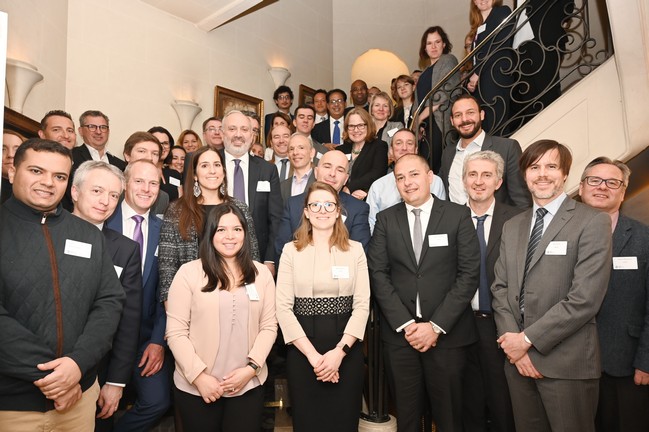89 results found
ChinaRAP is a collaboration between the International Road Assessment Programme and the Research Institute of Highway (RIOH), Ministry of Transport (MoT). Launched in 2008, seed financial support was provided through the World Bank Global Road Safety Facility by Bloomberg Philanthropies and now ten times that amount is now mobilised by the Chinese Government.
On 9 June 2019, the G20 Finance Ministers and Central Bank Governors endorsed new G20 Principles for Quality Infrastructure Investment at their meeting in Fukuoka, Japan.
Explore the capability of 56 countries to deliver infrastructure projects, identify priority reforms and pinpoint leading practices across infrastructure governance & institutions, regulatory frameworks, permits, planning, procurement and delivery.

The Climate and Disaster Risk Screening Tools developed by the World Bank, provide a systematic, consistent, and transparent way of considering short- and long-term climate and disaster risks in project and national/sector planning processes.

Communication throughout infrastructure project preparation should be recognised as a strategic activity. It should factor in the importance of all key stakeholder groups towards the project, tailor communicative actions to engage and inform them and foster a supportive environment.
A consultative workshop on the Global Infrastructure Hub’s upcoming reference guide on Output Specifications for Quality Infrastructure was held in Paris in partnership with Mott MacDonald on 15 April.
The Infracompass explores the capability of 56 countries to deliver infrastructure projects, identify priority reforms and pinpoint leading practices across infrastructure governance & institutions, regulatory frameworks, permits, planning, procurement and delivery.

FOR CONSULTATION The draft Guidance Note on National Infrastructure Banks and Similar Financing Facilities is open for public consultation to capture your insights and feedback for the final version.
Among the project initiatives aimed at developing and improving technological tools for transport and logistics planning, Empresa de Planejamento e Logistica (EPL) has started the process of building a logistics information system which is the basis of the National Transport and Logistics Observatory - ONTL.

With regards to the emphasis on the proper risk allocation, the Risk Allocation Guideline, which has been released annually, becomes very essential as a key reference in assessing and allocating risks for the purpose of guarantee provision, as mandated by the regulation.

The Global Infrastructure Hub (GI Hub) and Sustainable Infrastructure Foundation (SIF) signed a Memorandum of Understanding (MoU) today to foster their cooperation and collaboration in the area of global infrastructure development.
Well-planned and prioritised infrastructure investment improves productivity, engenders competitiveness and contributes to long-term sustainable economic growth. Nevertheless, the extent of realising these benefits from infrastructure investment varies considerably across sectors, by regions and by level of regulatory and institutional maturity.
This Guidance note provides a set of selected voluntary policy recommendations that seek to help governments in tackling challenges related to mobilising private financing for infrastructure and SMEs.

This paper provides reflections and considerations as to how MDBs including the IDB can use the Project Preparation Facilities (PPFs) to help countries fill the infrastructure gap by improving the quality of projects, reducing and mitigating risks, and leveraging private financing.

The purpose of the Guideline is to establish the types of socioeconomic evaluations that are applicable to the mass urban transport investment projects.

APEC economies endorsed the APEC Guidebook on Quality of Infrastructure Development and Investment (Revision) .


The PPP manual provides an overview of the procedures to be followed and approvals required for implementation of a PPP project.

The exercise is part of an annual ranking of the PPP context across countries undertaken by the World Bank group.
This report provides a view on the Chongqing area and argues three dimensions of connectivity can be improved: physical (infrastructure) connectivity, digital connectivity, and economic integration with nearby areas, the report then provides a strategy on how to carry this out.




 Quality Infrastructure Investor Database
Quality Infrastructure Investor Database






